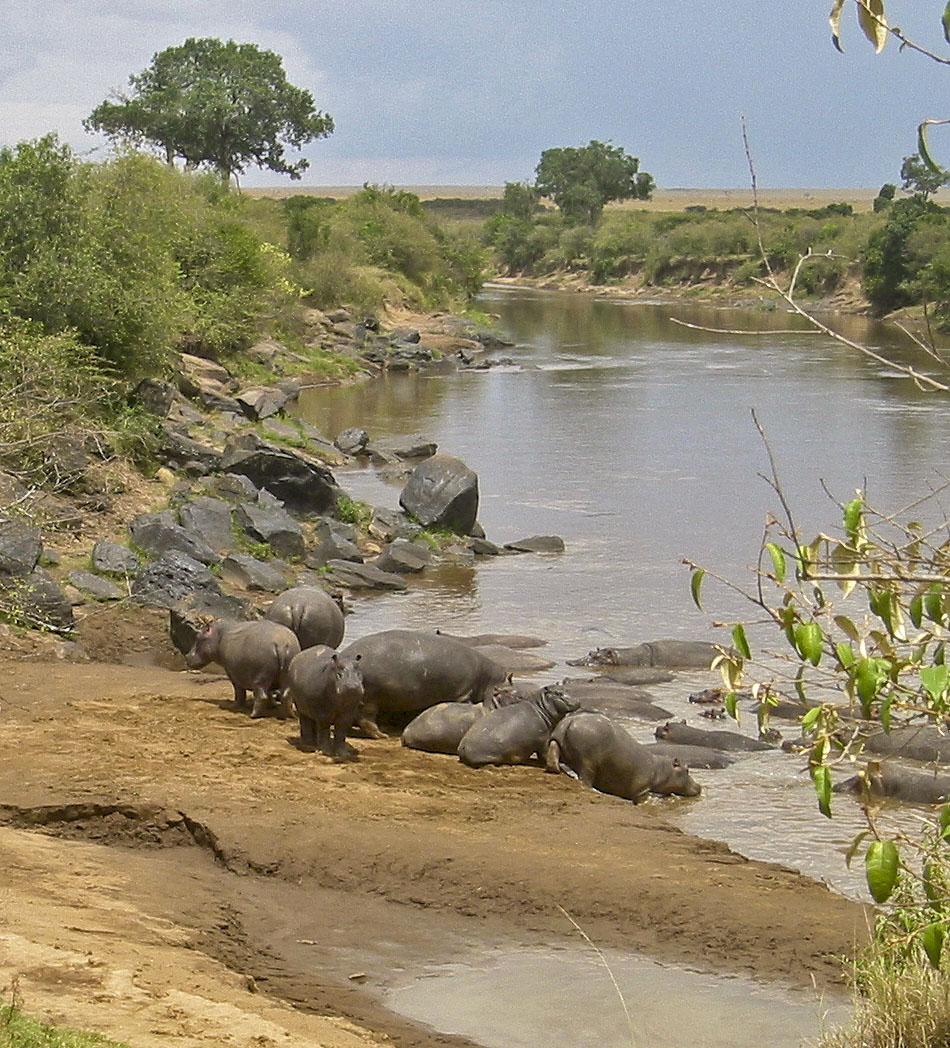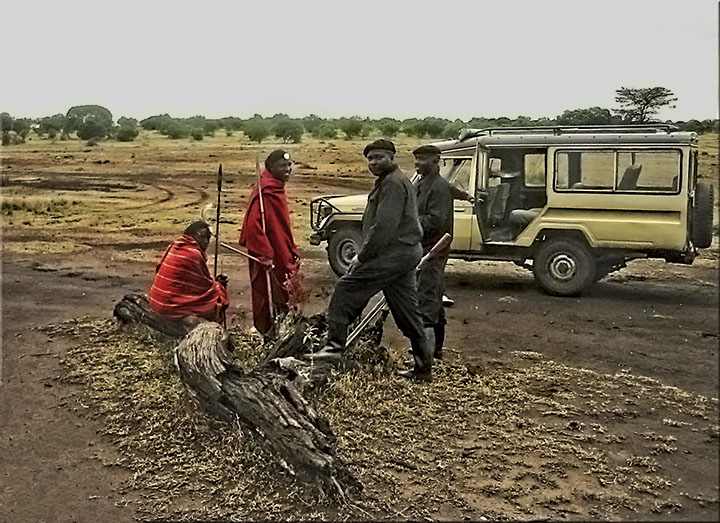Masai Mara is the portion of the northern Serengeti Plain which falls within Kenya, with the larger area to the south being under the control of Tanzania. The Serengeti has long held the title for the largest concentration of wildlife on earth, and is perhaps the last intact terrestrial migratory route of major significance.
The “Mara” in Masai Mara means “spotted”. (There seems to be a loose convention that the double “aa” in Maasai is used to refer to the people or the language, while Masai applies to the place, but this observation is not supported by any great consistency.) Widely spaced trees and a scattering of animals across the rolling grassy landscape support the consensus that the name is meant to be a literal description.
We stayed in the Mara Safari Club (now also under the management of the Fairmont Hotel group), a luxury tented camp similar to Sweetwaters in Ol Pejeta but with more amenities. The club sits on a peninsula shaped bluff above a big bend in the Mara River. This portion of the river is hippo heaven, and a unique atmosphere is created by their vocalizing.
As discussed in “Travel Plan”, although our arrival in Mara in late October was well past the peak of the great migration, we were still able to witness long lines of wildebeest winding single-file into Tanzania. A game drive to a river crossing did not provide the holy grail of migration viewing – herds of animals thrashing through the water with giant crocodiles snapping at their hooves. However, the presence of numerous other safari vehicles at the river allowed us the luxury to get out of our Land Rovers for a plain old fashioned picnic. About the time we got the blanket spread out, we realized that we were setting up about 50 yards from a large group of hippo. As is often the case in Kenya, if you don’t get exactly what you came to see, the consolation prize is likely to be pretty nice.
The Mara also provided us with a continuing saga starring a lioness and her meal. On an outward leg of a game drive, the safari radio system alerted us to the nearby scene of a lion feasting on a fresh zebra kill. Our guide thought it highly unusual that there was only one lion. That mystery deepened on the return trip much later in the day, as the now napping lioness was still alone, with no competition for her feast.
The following morning the lion was still alone, but had dragged her prize into some bushes in an attempt at concealment. At this point our guide and driver were truly amazed, both by the absence of other lions or vultures, and because the carcass hadn’t been molested by hyenas overnight. We were now hooked on this story, and when we checked on her again later that afternoon the rest of the pride had finally arrived. Male lions, cubs and their mothers; the whole gang was there to enjoy their share of the bounty.
In addition to two-a-day game drives, guided walks are available and especially recommended. We teasingly asked our naturalist guide if he usually took along two uniformed and two Maasai armed escorts whenever he left the grounds of the club. Well, no. So, would he be armed if he were by himself, or what does he do for protection? I’ll have to paraphrase, but his answer was basically, “Avoid walking too close to the bushes.” Words to live by wherever you are.
Upon returning to the USA I mentioned to several people that we had seen more wildlife by the time we reached our second stop than I had expected for the whole trip, and more animals in Masai Mara than all the other locations combined. Pessimism about the future of animal life in Kenya is difficult to understand in the areas we visited, but species that once numbered in the millions are now found in the hundreds of thousands, and many others are just holding on. The apparent contradiction is probably easiest to understand in the context of population figures. The “Encyclopedia of the Nations” reports that the human population of Kenya is five times the size it was in 1950, growing from 6.5 to 32 million people by 2003.
So, although the wildlife density in certain areas seems as high as the land can support, it’s the total area available that creates the limiting factor for the animal population. For the time being a tenuous balance seems to be holding, and we have included only a sampling of the diversity we observed and photographed.
To be continued on Page 8.
[hana-code-insert name=’Image Bottom Right’ /]Kenya Travel – Page One
Page 2 – Kenya Safari – Amboseli National Park
Page 3 – Aberdare National Park – The Ark
Page 4 – Ol Pejeta Conservancy – Sweetwaters Tented Camp
Page 5 – Kenya Safari – Ol Pejeta Wildlife and Scenery
Page 6 – Nanyuki – Mount Kenya Safari Club
Page 7 – You Are Here
Page 8 – Kenya Safari – Masai Mara Wildlife
Page 9 – Masai Mara – People and Trees
[hana-code-insert name=’Bottom Inline Links’ /]



If you would like to comment on this page, please use the form directly below.
To post a new topic, or submit your own photos, use the “Click here for Comments” link at the bottom of the page, and read the first post.